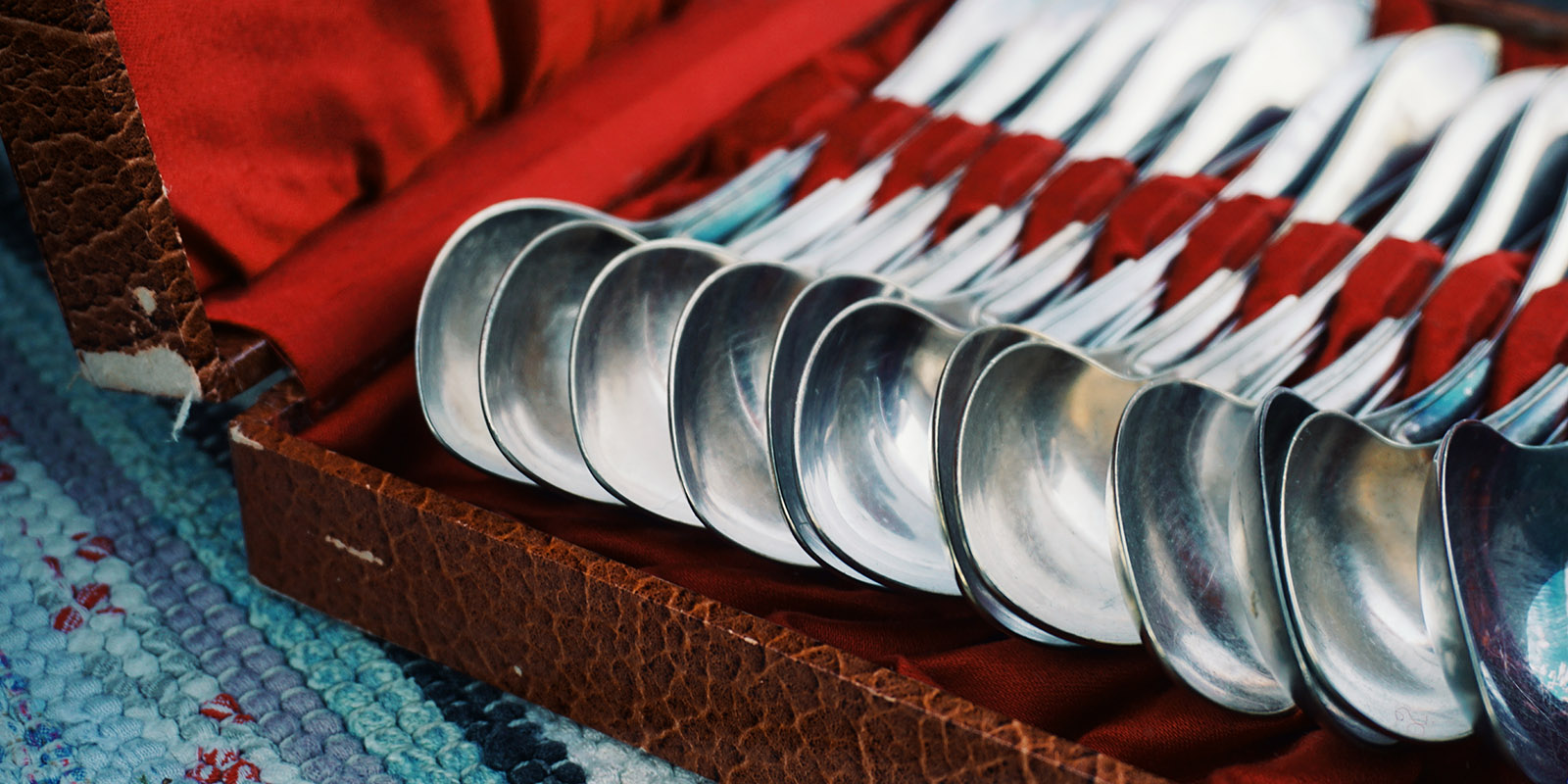Whether you’ve recently inherited some antique silverware or are looking to get rid of those pieces that have been collecting dust in your china cabinet for years, there’s a chance you may be able to fetch a fair amount for it. But how much your silverware is worth depends mostly on one thing: Is it sterling silver or silver-plated?
Here is a breakdown comparing sterling silverware to its most common silver substitutes, as well as a few tips on how to tell if your silverware is real sterling silver or not.
Is all silverware real silver?
While the name seems to suggest that all silverware is made from real silver, that is hardly the case. “Silverware” is more of a blanket term used to describe our eating utensils, but it does not always mean a piece is made from real silver.
Silverware can come in a variety of materials, including various base metals and stainless steel, but perhaps the most popular substitute for sterling silverware is silver-plated silverware.
Silver-plated silverware is made from a base metal that is covered in a thin layer of silver, chrome, or nickel to give it the appearance of genuine silver. It can provide a more inexpensive way to enjoy silver’s beauty in our everyday lives, and is also more resistant to corrosion, rust, and tarnish.
It is, however, less valuable than sterling silver.
What is sterling silver?
When we talk about real silver flatware, we are almost always talking about sterling silver. But because pure silver is too soft to eat with and would not prove very durable with such frequent use, sterling silverware is typically made from an alloy of 92.5% silver and 7.5% of a more resilient base metal like copper.
Sterling silverware made in the U.S. after the 1850s or so should have a marking on it that says either “sterling” or “925” (denoting its 92.5% silver content). This marking can usually be found on the bottom of platters, cups, and bowls, as well as on the backs of the handles on forks, knives, and spoons. If your silverware was made in the U.S. and does not have one of these markings, it is most likely not sterling silver.
If your flatware was made in a country other than the U.S., it may have another hallmark indicating it is sterling silver. This will look like a stamped icon, and there are hundreds of different varieties you may see.
Silver-plated items are also often marked with:
- Silver plate
- Plated
- EP (electroplated)
- EPNS (electroplated nickel silver)
- Silver Co.
It is illegal to falsely claim plated silver is sterling silver, so you should feel confident in your ability to trust these markings in determining authenticity.
Other signs your silverware is sterling silver (or not)
If you’re unable to find any markings on your silverware and are still not sure if it’s sterling silver, there are a couple at-home tests you can try that may give you a better idea. It’s important to note, however, that these tests are not 100% foolproof. If you want to be truly sure of your silverware’s silver content, you should consult a professional.
See how it wears
Silver and silver substitutes show wear quite differently. Silver-plated items often chip and expose the metal underneath. If there is a discernible difference in color or any other aspect between the exterior and the interior metals, that’s a fairly strong sign your silverware is not sterling silver.
See how it reacts
Silver is a natural element, and as such it chemically reacts with oxygen over time to form a patina shade on its surface. Silver plating, on the other hand, bonds to the underlying metal. Try buffing your silverware with a soft, non-abrasive white cloth. If doing so leaves a slight black mark on the white cloth, it could be a sign your silverware is sterling silver.
Some uncommon purity stamps you may see from other countries include “800” and “830S,” while even less-common stamps in the U.S. include “950” and “999” – all of which indicate the purity of the silver.
Now is the perfect time to sell your silverware
If your silverware is sterling silver, it may be worth quite a bit – especially given the recent rise of the price of silver.
Gold Guys can help you determine if your silverware is sterling silver, and can also make sure you get a great price for it. We make the process easy and ensure you’re in control of the transaction from start to finish.
We offer in-store and mail-in service and are dedicated to getting a great price for your gold, silver, and other precious metals. When you choose to sell with us, you’ll receive a check on the spot.
Contact us today to learn more about selling your sterling silverware for a great price and an even better experience.


